|
 Our plane, having covered the distance from Moscow to London in three hours and giving them back to us completely, due to the difference in standard time, landed at the airport. Our plane, having covered the distance from Moscow to London in three hours and giving them back to us completely, due to the difference in standard time, landed at the airport.
We encountered English traditions as soon as we took the bus to the city.
- Why is there left-hand traffic in England? - asked one of the tourists.
- But how the knights could repel the attack if they drove on the right side, because they were holding a sword or spear in their right hand, - was the answer. - And we still have knights, they are appointed by the queen. And if knights in medieval armor do not ride the streets now, then at the Ministry of War there are horse guards in armor and helmets with plumes on the clock. The Tower Castle officials wear red caftans and hats embroidered with gold and Tudor dynasty trimmings. And on the heads of the royal guards there are huge uncomfortable bear hats that fit over the eyes.
Here we are already driving through London and at one of the banks we find a carriage with emblems.
- What is it?
- The Queen, by tradition, travels in a carriage herself and sends only a carriage for her ministers. So it is accepted ...
Gradually, we begin to feel that here they are not just worshiping the outdated medieval traditions, but they firmly live in everyday life today.
We drive past the vast tracts of Kensington Park and Hyde Park. The grass in them (as in all other parks and squares) of special varieties, cut very low like a carpet, does not wrinkle at all. Therefore, visitors calmly walk on all lawns, sit and lie on them.
They walk along the paths on horseback. This beautiful and very enjoyable sport and recreation, apparently, does not die away, as there are special shops selling only everything necessary for riding. Horses can be rented, but, of course, this pleasure is expensive and only well-to-do people use it. As well as this small, flower-filled cemetery ... for dogs.
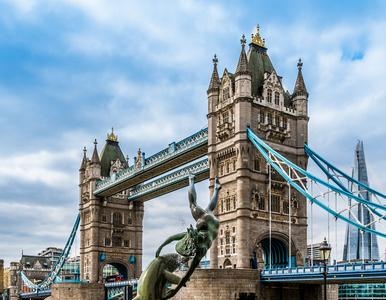 On the way to our hotel, the bus turns along short narrow streets, sometimes leaving on squares with large gardens in the middle. On the way to our hotel, the bus turns along short narrow streets, sometimes leaving on squares with large gardens in the middle.
“We have a lot of squares, Londoners have a place to rest,” the guide says, not without pride.
- And why now, in the afternoon, are all the gates of this square locked and no one walks there?
- Oh, sorry. This is apparently a private square. It belongs to the owner of the surrounding houses, and only the tenants hold the keys. ..
We enter the main shopping artery, Oxford Street; there are especially many new department stores here, some of which are still under construction. There are also skyscrapers of almost fifty floors. Now, in November, the streets are already decorated with garlands and illuminations for the Christmas holidays. It turns out that Christmas trees are brought to England from Norway.
Here is our Montague Hotel, on the street of the same name, right next to the British Museum, in the center of the English capital.
All the hotels we had to stay at in London, Coventry and Manchester were of the same type. Small three to four storey buildings with complex layouts, narrow corridors, steep staircases and large gardens. At the entrances, there are always rows of boxes with flowers.
The floors in all lobbies, halls, living rooms, corridors and rooms are carpeted, so it is very quiet everywhere. Central heating only in common areas. In the rooms, halls and living rooms, traditional fireplaces are mandatory. But ... these fireplaces are no longer fired with coal, but with gas. Sometimes they are even replaced by electric reflectors.
Single windows, no vents. Instead, half of the frame can be raised, creating an opening of any height, like we do in trolleybuses or buses.
Washbasins, bathtubs with two separate taps, no mixers.In order not to burn ourselves, we had to first draw a handful of cold water, and then hot. The British themselves wash directly from the sinks.
After lunch, second breakfast, a set of dishes similar to our lunch, we leave to explore London. We start from the City of London, which means London. This area, surrounded by fortress walls in the Middle Ages, was the seat of the English kings. The City and its neighboring Westminster area, on the left bank of the Thames, are the oldest parts of the English capital. The City is now considered the financial and business center of London.
Greater London now occupies one thousand eight hundred square kilometers, being the first city in the world in terms of territory, and in terms of population - ten million people - the third city in the world. The city retains its borders and is like a city within a city. Here is the Menshnon House - the official residence of the Lord Mayor of London, built in 1739 - 1753, and an even older corporation building of the City of London (1411 - 1425).
We drive along the narrow streets of the City and stop at a pedestal crowned with a winged griffin, near which, according to tradition, the queen must stop and get out of her carriage in order to receive the keys to the city from the Lord Mayor and the right to enter the City.
The City differs not only in the uniform of the police, but also in the clothes of the clerks working here. If in London they dress according to the current fashion, then here, according to tradition, as in Dickens's times, almost all clerks wear bowlers, a high white starch collar, a short dark jacket, and narrow striped trousers. In any, even the sunniest weather, they always carry a long umbrella in the form of a stick with a curved handle.
Before and after work, as well as during lunch, clerks flood the narrow streets. Then you immediately believe that 330,000 people work in the City.
During office hours, the streets of the City are almost deserted - everyone works in their offices. After work, when the flow of clerks subsides, the City turns into a desert area - not many more than ten thousand people live here.
 Here are the battlements and towers of the oldest London fortress Tower. Its walls are gray from age-old dust and soot, and the edges of the battlements, washed by rains, sparkle with whiteness, and this gives the fortress a special kind of beauty. The oldest and highest part of it, the White Tower, was built in the eleventh century, under William the Conqueror. The rest of the fortifications were completed in the thirteenth century. Here are the battlements and towers of the oldest London fortress Tower. Its walls are gray from age-old dust and soot, and the edges of the battlements, washed by rains, sparkle with whiteness, and this gives the fortress a special kind of beauty. The oldest and highest part of it, the White Tower, was built in the eleventh century, under William the Conqueror. The rest of the fortifications were completed in the thirteenth century.
For a long time, the Tower was the residence of the English kings, then it became a prison for their political opponents, and now it has been turned into a museum.
At the entrance to the fortress there is a foot guard in a high bear hat pulled down over his eyes. He then stands, frozen at the entrance, then makes a complex march with a high rise of his legs, the imprint of a step and sharp turns. With an uncomfortable medieval dress, he has a completely modern weapon - a semi-automatic carbine.
Under the walls of the fortress, on the site of the former ditches, there is a green meadow with various sports grounds.
To the right of the Tower are the remains of an even more ancient structure - the walls of Roman fortifications.
Inside the fortress there are collections of military armor of the Middle Ages. There are stuffed animals of huge horses with knights sitting on them in armor or chain mail and in helmets with visors.
It was interesting to find among the exhibits of the Tower a bronze sculpture of Peter I with a hammer and anvil, which is called “Peter on the Thames”.
Royal insignia and jewels are kept in Wakefield Tower, they are now displayed for a special fee. The English Parliament is constantly cutting funds for the maintenance of the royal court, and this museum, apparently, helps the royal family to increase their income. Jewelry is stored in glass slides. Huge diamonds sparkle, and among them one of the greatest - "Star of Africa" - in the crown of Queen Victoria and many others.All the orders of Great Britain are also represented here, starting with the highest "Order of the Garter".
- Its origin is as follows, - says the guide. “At the court ball, King Edward III danced with a pretty young duchess. Suddenly her garter fell, and all the courtiers around burst out laughing. Then Edward III lifted this garter and declared:
- Today you are laughing, and from tomorrow you will consider it the highest honor to wear the order of this garter, which will be established by me.
And established!
Oddly enough, and now the "Order of the Garter" is the highest award in England. After the Second World War, this order was taken away from the Japanese emperor, who opposed England, and from the Belgian king ...
After examining the royal jewels, we find ourselves in those parts of the Tower, where streams of blood were shed in the struggle for power and for these very values. This is the so-called Bloody Tower, a torture tower with a set
rum of tools "for interrogation", a block, an ax and a deep well connected to the Thames, where the bodies of the tortured were dumped.
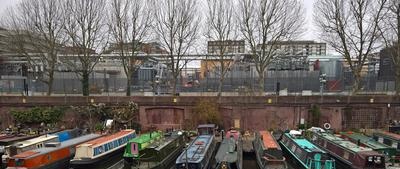 Here, in a stone sack with three-meter walls, in the 16th century the writer and traveler Walter Releigh spent 12 years. Here he wrote his "World History". Here, in a stone sack with three-meter walls, in the 16th century the writer and traveler Walter Releigh spent 12 years. Here he wrote his "World History".
In the Tower of the Snails, we are shown a staircase, under which the child King Edward V and his brother were strangled. We recently saw this scene in the English motion picture Richard III.
And here is the "place of execution", where the opponents of the kings and ... the wives they had tired of were executed. The outstanding philosopher of the 15th-16th centuries, the socialist-utopian Thomas More, was also executed here.
Unfortunately, the modern rulers of England turned out to be much more kind-hearted to the hardened fascist - Hess. He was also kept in the Tower, but not in prison premises, but in one of the ordinary residential buildings of the fortress.
Large black crows with clipped wings roam the lawns around the "frontal place". In the Middle Ages, they had enough food here. Now, for their food, the state gives the administration of the Tower 2 shillings 4 pence a week, and special booths and feeders have been installed for the ravens. This is also one of the English traditions, as there is a legend that if the crows leave the Tower, it will collapse and the British Empire will perish.
After the Tower of London, we inspect St. Paul's Cathedral, somewhat obstructed by new buildings, but from afar, especially from the Thames, it rises just as beautifully its dome as our Isaac. It was built in 1675-1710. Buried in the cathedral is the Duke of Wellington, who commanded the Allied army against Napoleon at the Battle of Waterloo. His hearse is cast from cannons captured in this battle. The national hero of England, Admiral Nelson, rests here in a coffin made from the masts of the Napoleonic ships he had captured. On one of the gravestones there is an inscription: "If you are looking for a monument, then look around." This is the grave of the creator of St. Paul's Cathedral, the most prominent English architect Christopher Wren.
The huge cathedral is famous for its acoustics. Standing on the gallery, near the dome, say a word - it becomes audible throughout the cathedral.
For this she is called the "gallery of whispers."
In the evenings, we stroll along Oxford Street and other shopping streets full of shop windows.
Milk trade is very clearly organized throughout the country. Early in the morning, empty bottles of money stand at the door of any house in a small village or apartment in a modern skyscraper, and a little later you see all these countless empty bottles replaced with full ones. This work is done every day by dairy company drivers.
We visited Piccadilly Circus, where advertisements are especially vivid in the evenings and the greatest excitement reigns. We admired the fifty-meter column, crowned with a monument to Admiral Nelson on Trafalgar Square. We examined the Parliament building, Westminster Abbey, visited the British Museum, the National and Tate Art Gallery.Among the many thousands of paintings, I was most impressed by the works of the English artist Turner, the founder of Impressionism, painted as if with colored steam, since his favorite theme is landscapes through sunlit fogs.
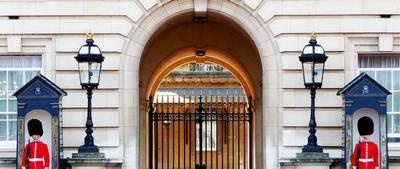 We watched the traditional changing of the guard at Buckingham Palace. This is a well-rehearsed parade performance for centuries, which takes place every day at noon. Before the eyes of the large audience gathering here, to the sounds of orchestras, the guards units in picturesque old costumes, which have changed from the guard, are parading. We watched the traditional changing of the guard at Buckingham Palace. This is a well-rehearsed parade performance for centuries, which takes place every day at noon. Before the eyes of the large audience gathering here, to the sounds of orchestras, the guards units in picturesque old costumes, which have changed from the guard, are parading.
Leaving London, we drove from south to north and back almost all of central England from London to Manchester, and in addition to them we saw the cities of Hampton Court, Windsor, Oxford, Coventry, Birmingham, Lichfield, Warwick, Swinton, Stretford on Avon and a lot of villages ...
The views from the bus are very beautiful. Evergreen valleys and hills, separated by rows of shrubs at the borders of different owners and individual pastures, are decorated with numerous groves, groups of trees, ancient castles and cathedrals.
Despite the fact that London and Irkutsk are located approximately on the same parallel, here, next to oaks, birches, pines, elms, alder and willow, plane trees, beech and cypress grow.
In November, most of the trees are still green and there are many different colors. After all, here the average January temperature is plus 4.5 - 5.5 ° С, and in Irkutsk - minus 20 - 22 ° С. This is due to the influence of the seas surrounding England and the warm North Atlantic Current.
Herds of the famous long-haired English sheep, black and white cows and pigs graze in the pastures around the clock and all year round. For them, there are reinforced concrete drinkers and feeders right in the fields. The hay pressed into briquettes is stored under sheds.
The roads on which we are driving are in perfect condition: not a single pothole, unevenness. The carriageway is separated by large glass buttons that shine from the reflected headlights far ahead. This enables drivers to stay in their lane in complete darkness.
In the villages, special lanterns with the yellow light of economical sodium lamps illuminate the passage even in the most intense fogs. On both sides of the highway there are bright gas stations of rival firms: the British Shell and the American Esso. The famous red telephone booths stand at regular intervals.
Ideal is the new London-Birmingham highway, in six lanes, with intersections only at different levels and with glass restaurants in the viaducts above it.
Railways in Central England also have four tracks on the tracks, which ensures the maximum speed here too.
Leaving London, we pass one of the suburban parks, in which a herd of 640 deer grazes freely. In general, in all the parks of England there are many different wild animals and birds, thanks to the cares of visitors that have become completely tame. Squirrels, songbirds, wild ducks come to walkers to get a treat from them.
Windsor Castle - the main residence of the English kings for 850 years, and now their permanent summer residence and tomb - located on a high hill, is very majestic and beautiful. A wide panorama opens up from here for many kilometers around. There is also a guard from the royal guards and a solemn changing of the guard.
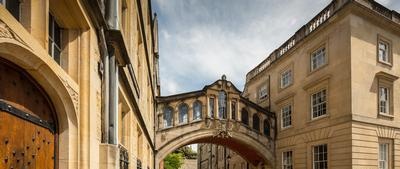 Oxford, the oldest university in England, was opened in 1180. The existing buildings of colleges began to be built in 1240, later retained the style of the original ones, so the entire campus seems to be an island of the Middle Ages, especially since here and there you can meet students going to exams in the obligatory black robes. Every hour the beautiful chimes of countless tower clocks sound in Oxford. Oxford, the oldest university in England, was opened in 1180. The existing buildings of colleges began to be built in 1240, later retained the style of the original ones, so the entire campus seems to be an island of the Middle Ages, especially since here and there you can meet students going to exams in the obligatory black robes. Every hour the beautiful chimes of countless tower clocks sound in Oxford.
Stretford on the Ringing is a city where everyone breathes the memory of William Shakespeare. The house where he was born, the school where he studied, the restaurant where he often dined, the church where he was baptized and where he is buried are preserved here.Here is
there is a Shakespeare Museum, a theater where his plays are staged, and many monuments to him and the heroes of his works.
In Coventry, Birmingham and Manchester are interesting shopping centers re-created with buildings of the most bizarre forms, as a rule, coexisting well next to the buildings of the XVI and XVII centuries.
It is interesting that in Coventry all parking lots and garages for cars are located on the flat roofs of commercial buildings, where they rise along specially arranged ramps.
In the mining town of Swinton, we were invited to the mayor's office. It turned out that a housewife, who took an active part in public life, was chosen as the mayor, and her daughter-teacher was the assistant to the mayor.
After the trip, I got a general impression of English architecture and the life of the British.
Every street in any village and residential area of a large city, including London, is, as a rule, two-story houses of the same type - either with bay windows, or with porticoes, or with colonnaded entrances. And in old houses - wooden structures filled with natural stone or plastered bricks. Therefore, most of the residential streets create a genuine ensemble, as in our street of the Architect Rossi.
Houses with bay windows, that is, with lanterns protruding from the plane of the walls, increasing the living area of the rooms, their illumination and insolation, especially rational in northern latitudes, are the most beloved and widespread in England. At the same time, almost every house has its own, only inherent features - for example, bay windows are different in shape or differ in details.
In front of the houses, there must be front gardens, divided by trimmed bushes or fences into several sections, and some of the houses opposite them are painted in different colors. The fact is that the apartments here are traditionally located on two floors, with an independent external entrance and a staircase. Downstairs there is a kitchen, a living-dining room, a bathroom, a toilet, and upstairs there are adult and children's bedrooms. Therefore, the houses are sold per apartment, in parts, and the choice of color for each individual section of the facade depends on the taste of its owner. Above the tiled roofs, there is a whole forest of chimneys of the most bizarre shapes. In winter, there is a lot of soot in the air, but the rains wash it off from all protruding parts, leaving only in the recesses. Therefore, and without that more voluminous than in other countries, English architecture looks even more voluminous, giving the cities and towns of England a completely special, only characteristic of them external appearance.
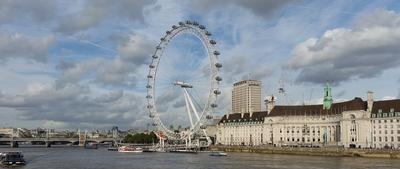 New residential areas in English cities are being built up with combinations of high-rise buildings, more than twenty stories, and elongated four-story buildings. Apartments in one part of them, according to tradition, are located on two floors, and in the other, they begin to accustom the British to living on one floor. New residential areas in English cities are being built up with combinations of high-rise buildings, more than twenty stories, and elongated four-story buildings. Apartments in one part of them, according to tradition, are located on two floors, and in the other, they begin to accustom the British to living on one floor.
The notorious English stiffness, apparently, is characteristic only of aristocrats, who until recently could only travel outside the country, and about them, in the main, were written novels. Most of the English we met turned out to be very cheerful, sociable and friendly people. While working, they purr songs, joke, laugh. They readily provide the necessary assistance to visitors. If we started to cross the street in the wrong place, all the drivers immediately stopped the cars and with gestures, smiling, offered us to complete the crossing.
After work, after lunch, English men are very fond of messing around in their gardens and front gardens. Later, the family gathers at the TV. Childless people go to watch TV in a cafe or bar - this is more profitable, you do not need to spend electricity on lighting an apartment, on TV set.
Dinner is not accepted. They drink very little, mostly - ale (English beer), more often coffee, since the prices for all alcoholic drinks are specially set very high.
The working week is 42 - 46 hours, less for women, more for men, but the average hourly wages of women are 1.6 times lower.
G. Lubos
|